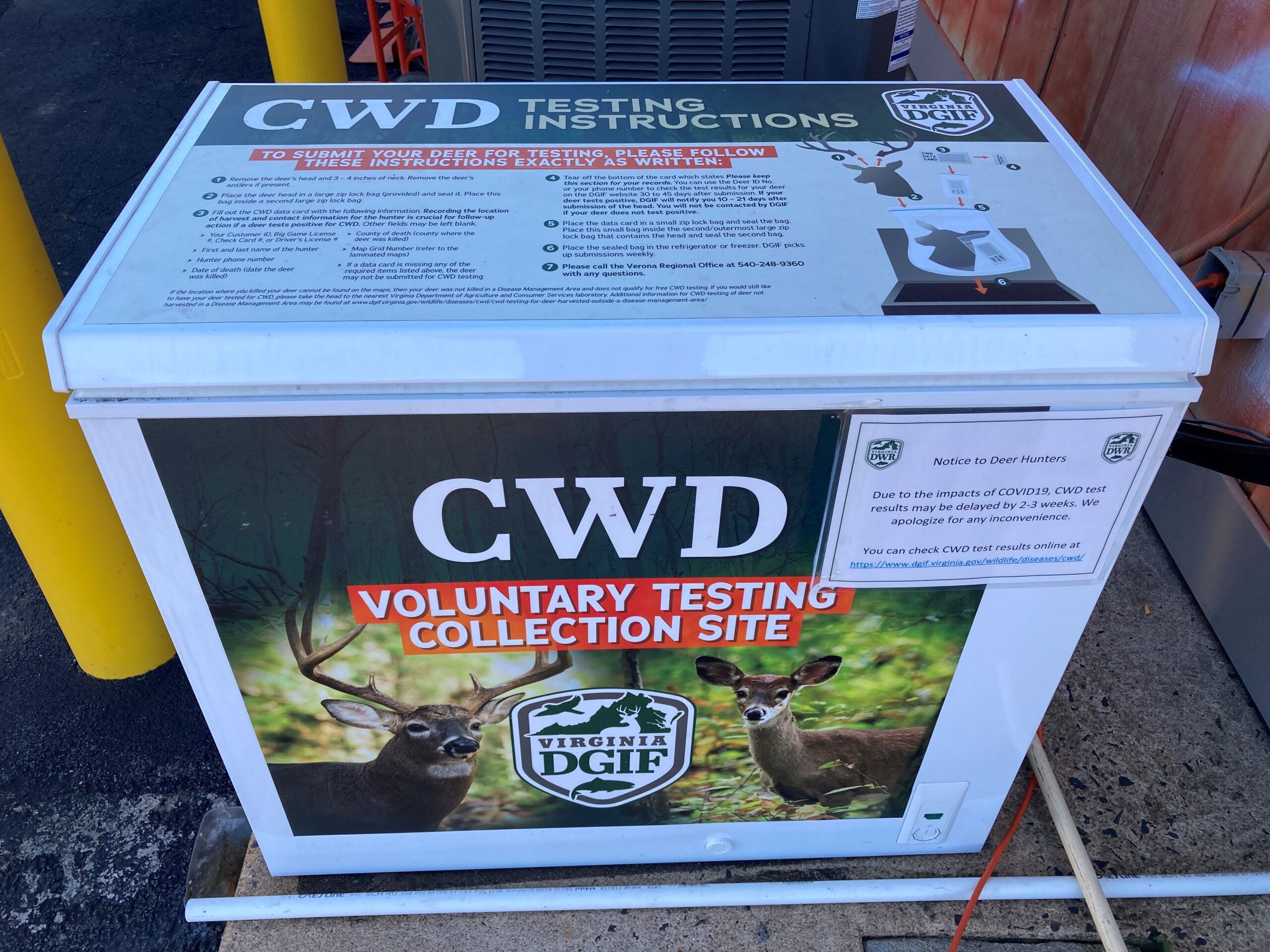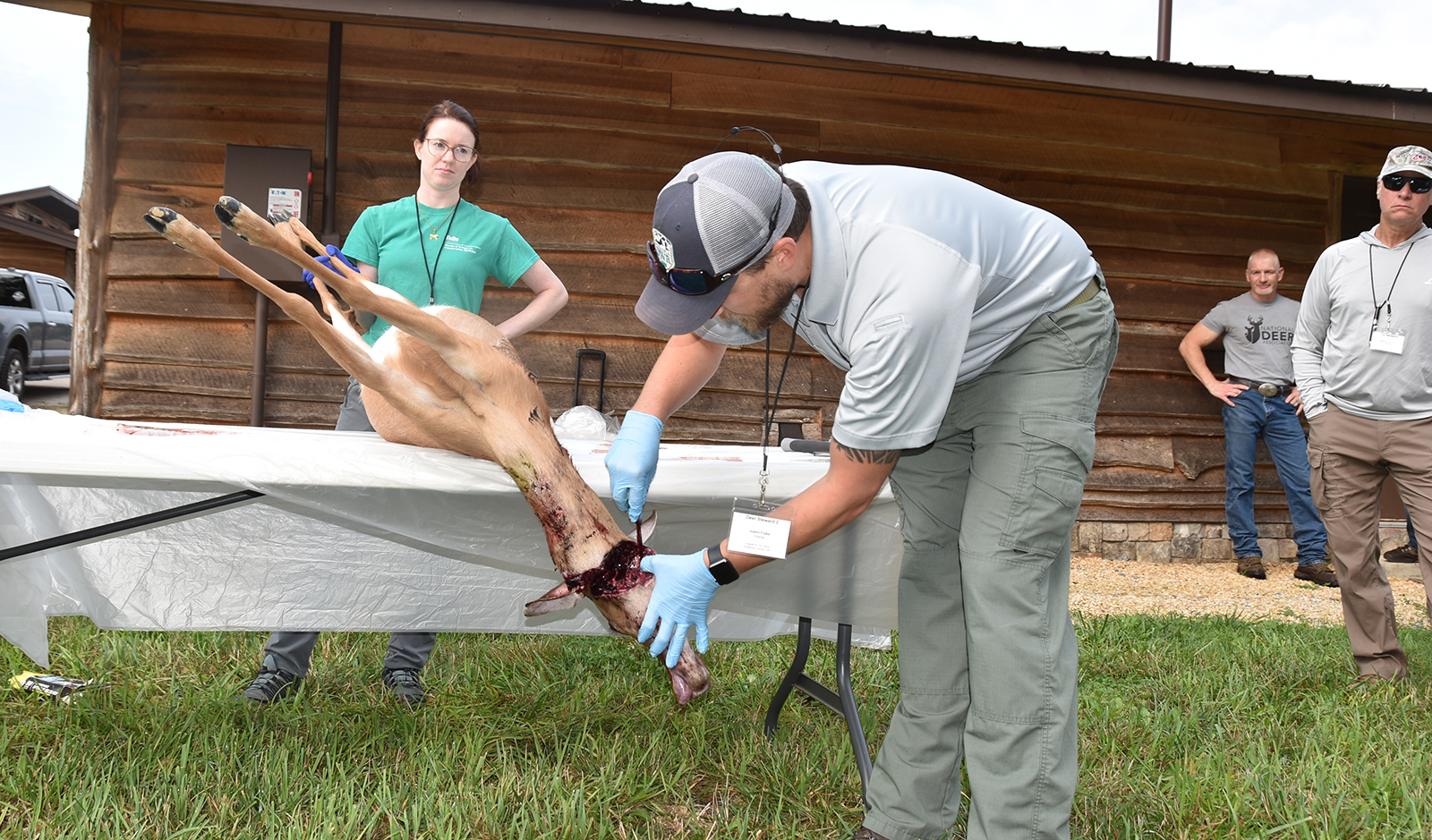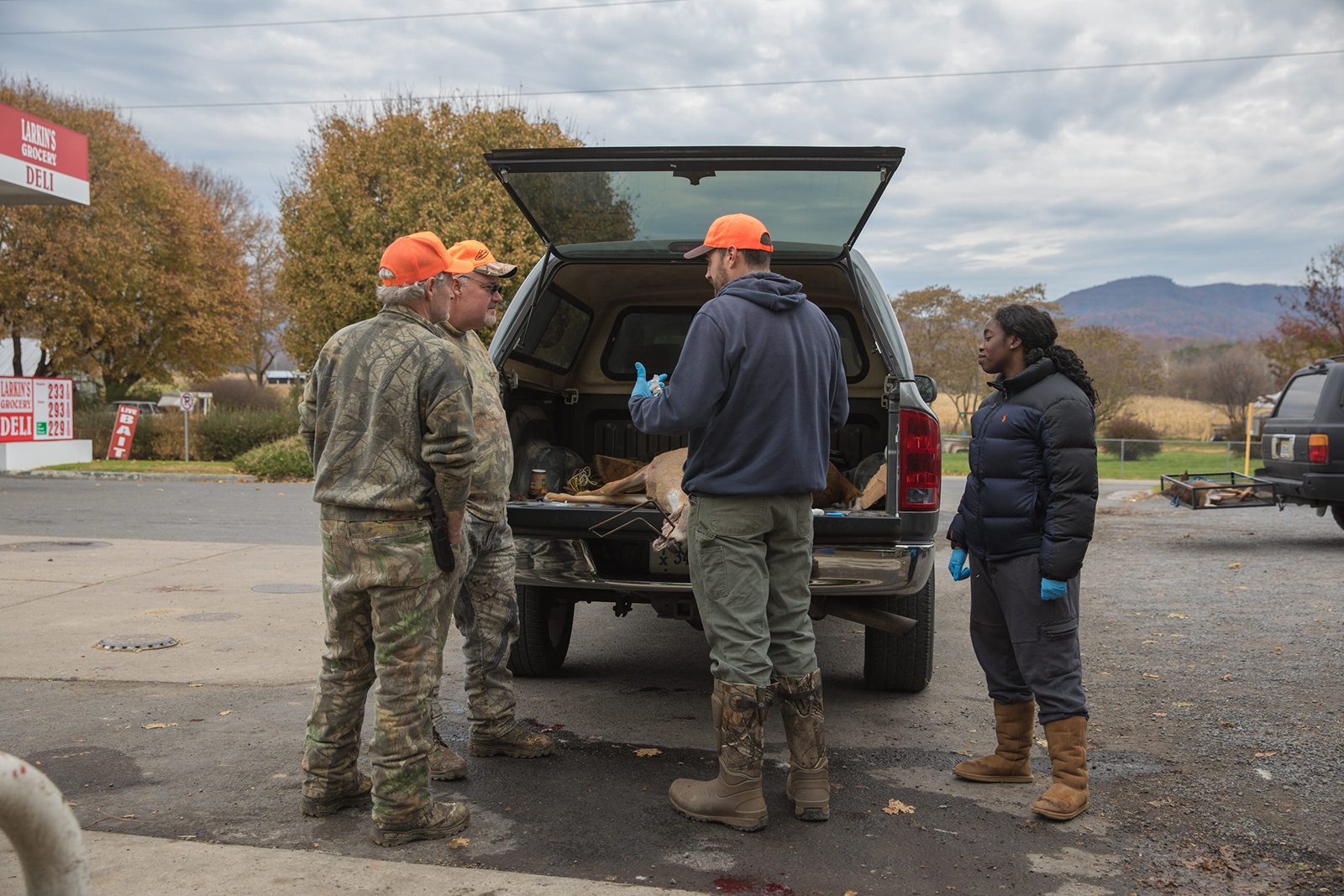By Bruce Ingram
Photos by Meghan Marchetti/DWR
On November 16, when the General Firearms deer season begins, DWR will set up designated mandatory testing sites in Shenandoah, Carroll, Patrick, Franklin, Tazewell, Wythe, and Pulaski counties for hunters to bring their deer to in order to be tested for Chronic Wasting Disease (CWD). All deer killed in those counties on that day must be brought to a CWD sample station (open from 8:00 a.m. to 7:00 p.m.) or to one of the DWR fridge stations that are open 24/7. Hunters can drop off the head and about three to four inches of the neck at fridge stations. Instructions for head submission are provided at those sites.

Deer harvested during the season in any of DWR’s Disease Management Areas (DMAs) should be brought to a voluntary CWD testing site. Find more information about DMAs, how to handle deer harvested in a DMA, and voluntary testing stations on the DWR website.
Hunters can also locate mandatory and voluntary DWR testing sites on an interactive map.
In the past, a number of myths have perhaps hindered CWD testing efforts. Here are some of them, paired with the reality.
Myth: CWD testing takes a long time.
Reality: Alexandra Lombard, wildlife health coordinator for the DWR, emphasizes that CWD testing is quick, takes no more than 10 minutes, and consists of removing lymph nodes from a deer’s neck.
“We take a scalpel and cut under the neck near the back of the jawbone, which is where the two lymph nodes are,” Lombard said. “We then cut the cheek to look at the entire lower jaw in order to figure out the age by examining teeth.
“If a buck is to be mounted, we won’t cut into the neck because we don’t want to disfigure anyone’s trophy. But we will send information to the taxidermist so that individual can remove the lymph nodes. Older bucks are the deer more likely to be impacted by CWD because of their age and because they travel greater distances and come into contact with other deer more frequently.”
Results from lymph node testing typically come back within two to four weeks.

DWR’s Deer Project Leader, Justin Folks, removes a deer’s lymph nodes while DWR wildlife health coordinator, looks on.
Myth: The atmosphere at sampling locations is tense.
Reality: Justin Folks, DWR deer project leader, relates that the atmosphere the DWR tries to create at these test sites is reminiscent of the old physical check stations.
“There are many hunters looking in the back of each other’s trucks and sharing hunting stories,” he said. “It’s fun for us to interact with the hunters. While I’d prefer to be on the deer stand myself that day, I get to live vicariously through the successful hunters who stop by. Almost every hunter leaves a sampling station having learned something. And I usually learn something from them, too.”
Lombard agrees and added that DWR staff enjoy the opportunity to interact and learn from Virginia hunters.

DWR employees enjoy the opportunity to listen to hunters at CWD testing sites.
Myth: CWD is a myth.
Reality: Unfortunately, says Lombard, CWD is very much a reality and negatively affects whitetails across the United States, and some states are experiencing high mortality as a result of CWD.
“All deer with CWD will eventually die from it, if they don’t die from something else before then,” Lombard said. “At present, there is no way to treat or cure CWD, and there is no such thing as herd immunity when it comes to this disease. We don’t know what the future will bring concerning CWD.”
Folks recounted the story of a deer that died from CWD in West Virginia and whose vertebrae had worn holes through its hide. “Tell that deer that CWD is a myth,” he said.

DWR’s CWD testing efforts are essential in attempting to limit the spread of the disease in Virginia.
Myth: Hunters lose a tag if their deer tests positive for CWD.
Reality: Lombard stated that DWR offers a replacement antlerless tag to any hunter who submitted a deer for sampling that was diagnosed with CWD.
Myth: CWD testing is a way to catch game violators.
Reality: Both Lombard and Folks strongly stated that DWR personnel are not looking for game violations at these stations. This is an information- and education-focused effort, and also a good time for DWR personnel to receive input from the hunting public. Both Lombard and Folks emphasized that this information is invaluable for DWR learning more about the presence of CWD and to see if the agency’s work to slow the spread is being successful. And if not, what additional steps should possibly be taken.
For more information on CWD and CWD testing: www.dwr.virginia.gov/cwd


